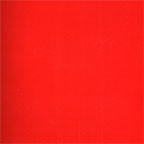
The late German synth master Conrad Schnitzler is one of kosmische electronic music’s most interesting secret weapons. He helped to lay the foundation for deep, spacey, and turbulent soundscapes while playing in the early incarnations of Cluster (then known as Kluster) and Tangerine Dream (Schnitzler only appeared on that popular group’s 1970 debut album, Electronic Meditation), as well as in Eruption. Yet he remained strictly a cult figure and often went ignored in documentaries and histories of German music.
Wriggling free of band settings in the early ’70s, Schnitzler set out on a madly productive solo career that spanned over four decades. You could pick any 30 or so releases by him and discover a panoply of infernal and transcendental sounds illuminating each one. Even near the end of his momentous life, Schnitzler was creating challenging music that put to shame the efforts of those a quarter of his age.
Rot (German for “Red”) is Schnitzler’s first true solo LP, and what a debut it is. Symmetrically divided into 20-minute sidelong jams, it announced the presence of a diabolically talented composer. “Meditation” begins with a keening drone—a demonic busy telephone signal, practically—that portends very bad and very interesting things. Gradually, Schnitzler inserts a menagerie of acutely contoured, haywire synth disruptions to increase the chaos factor and to keep you on the knife-edge of your sanity. The effect over “Meditation”’s duration is that of a civilization incrementally unravelling. The eventful turbulence—and that persistent, penetrating drone—occurring throughout this piece is anything but meditative. Rather, Schnitzler takes the molecular tonal catastrophes of Gil Mellé’s Andromeda Strain soundtrack and magnifies them to madness-inducing intensities.
“Krautrock” resembles some of American Buchla innovator Morton Subotnick’s discombobulating bleepathons, but Schnitzler, as is his wont, generates a more swarming and sinister aura than the creator of Silver Apples Of The Moon. (Trivia: Faust’s “Krautrock” came out in 1973, too.) This “Krautrock” sounds little like that of the genre’s best-known figures, but in its own peculiar, mad-scientist way, the track’s as psychedelic as the first Kraftwerk LP, Organisation’s Tone Float, and Seesselberg’s Synthetik 1. It’s a relentless cascade of metallic, insectoid timbres and nightmarish synth howls and wails. To its core, “Krautrock” is radio-unfriendly and an effective way to make a crowd of normcore folks scatter. But I love it to death.
The craziest thing about Rot is that Schnitzler had to release it himself. Apparently, no record company wanted to take a chance on such bizarre, uncompromising music. Thankfully, a few labels since have had the brains to re-release it and keep it relatively available. You should make it your life’ s mission to obtain this record. The excellent Bureau B imprint reissued Rot in 2012, so it shouldn’t be too hard to track down a vinyl copy. -Buckley Mayfield


